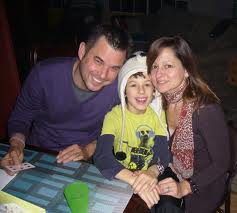We always talk about PHA as a community of patients, family members and medical professionals. Easy words, but expalining what that really means, that's harder.
Let me give it a try through the lens of PHA's leadership meetings.
Twice each year, PHA's leadership meets to discuss issues that keep the organization moving forward. They are all volunteers who contibute of their own time and talents. The most recent meeting was in Orlando (the city where we'll be having our
Tenth International Conference in June).
Those leadership meetings occur in three parts...beginning on Thursday and continuing through Sunday.
The first is the
PH Professional Network's Executive Committee. These
elected officers and committee chairs provide direction and leadership for over 1,100 nurses, pharmacists, respiratory therapists and other allied health professionals who are in membership. What does that mean in practice?
Well, here's one example. Stephanie Harris, Chair of the Education Committee, spoke about the recent publication of PHA's new EMS brochure. It was written by PHPN volunteers serving on her committee, so that emergency techs coming to PH patients' homes would know how to work appropriately with a PH patient in crisis. The brochure is designed with a magnet to be placed on a refrigerator...where emergency technicians are trained to look for infoirmation. Filling a great need, thousands have already been distributed. Because medical professionals donate their time and expertise, PHA can make
this brochure and other material available free.
After this day long meeting - with conversations and planning about activities ranging from the PHPN and PHA Conferences, a mentoring program, patient support programs, medical education, strategic planning and much more - ended, it was time to move on to the Scientific Leadership Council the following day.
The
Scientific Leadership Council (SLC) is comprised of
27 physicians from six nations, all at the highest level of the field. They are linked to the PHPN Executive Committee with the PHPN Chair (
Louise Durst of the Mayo Clinic) having a voting role and to the PHA Board of Trustees through a patient liaison. Harry Rozakis has just rotated off that role, replaced by
Rita Orth.

When a new member comes to the SLC, I often will ask them if the meetings are what they expected. Usually, the answer is that they thought it would be more about the science but quickly understood that it's much more about building the structure of the field. That's particularly important in a complex specialty that has grown from about 100 treating physicians to over 10,000 in little more than a dozen years.
The SLC spent a lot of at their recent meeting discussing and planning management of PHA's multiple
medical education activities, a new procedures document for Flolan use, PHA's research programs, the development of new guidelines for screening and diagnosis of PH patients with connective tissue disease, progress on our pediatric programs and a variety of other issues. Dr. Bruce Marshall, the vice president of clinical affairs at the Cystic Fibrosis Foundation also gave a great presentation, helping PHA's medical leadership understand how that 50 year old organization has helped to develop important structure for patient care and research in their field.

While the SLC meeting was continuing on Friday, PHA board committees were also gathering in various rooms throughout the hotel. The Conference Planning Committee, Strategic Planning Committee, Development Committee and Governance Committee all had important items to discuss. Those ranged from the many, many details related to our complex Conference and Scientific Sessions (150 or so invited speakers, including over 120 medical professionals come as volunteers covering all their owen costs, including registration) to working on continuing sustainability and clear direction for this structure called PHA that has been built to support the patients, families and medical professionals who live with PH.
The Board of Trustees meetings began on Saturday and continued into Sunday. Led by
Laura D'Anna, the board includes 23 patients, family members and medical professionals who live or connect daily with this illness and dedicate their efforts to create a better future for PH patients. The board is also fortunate to include the surviving founders as emeritus members. You can
click on the board members names to find out more about who they are.
An important part of how the board functions is that its various leadership structures are tightly connected and reflect various parts of of the community. The chair, chair-elect and immediate past chair of the Scientific Leadership Council have seats on the board. So do the chair and chair-elect of PH Professional Network. Six support group leaders are on the board. There are four board members whose children were diagnosed at very young ages...as well as two PH pediatricians. And there are seven patients and six caregivers. There are three who continue the fight in memory of a loved one.
While the board deals with a broad range of issues, this meeting included discussion of (among other topics) how we can use our assets to more effectively build public awareness of PH, better help patients and families deal with issues of life changes after diagnosis and, of course, make the upcoming Conference a life-changing event for those who attend.
So that's a quick picture of how PHA's volunteer leadership fits together across what has become a complex structure to provide oversight and planning and keep us in sync.

 A program
has been set for May 5 in Madrid. It
is not just an occasion. It is an
opportunity that I have no doubt we will grow in future years.
A program
has been set for May 5 in Madrid. It
is not just an occasion. It is an
opportunity that I have no doubt we will grow in future years. 





